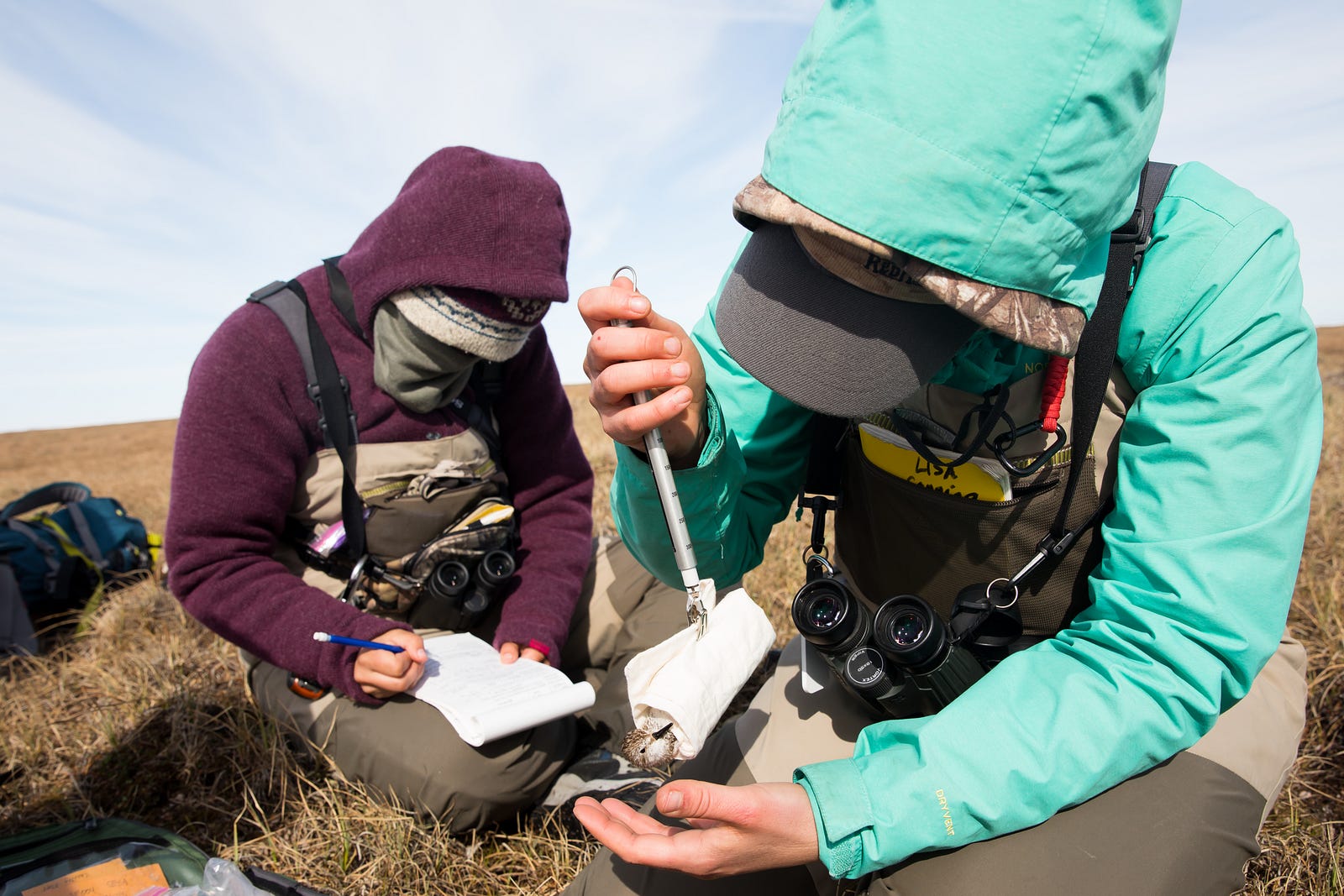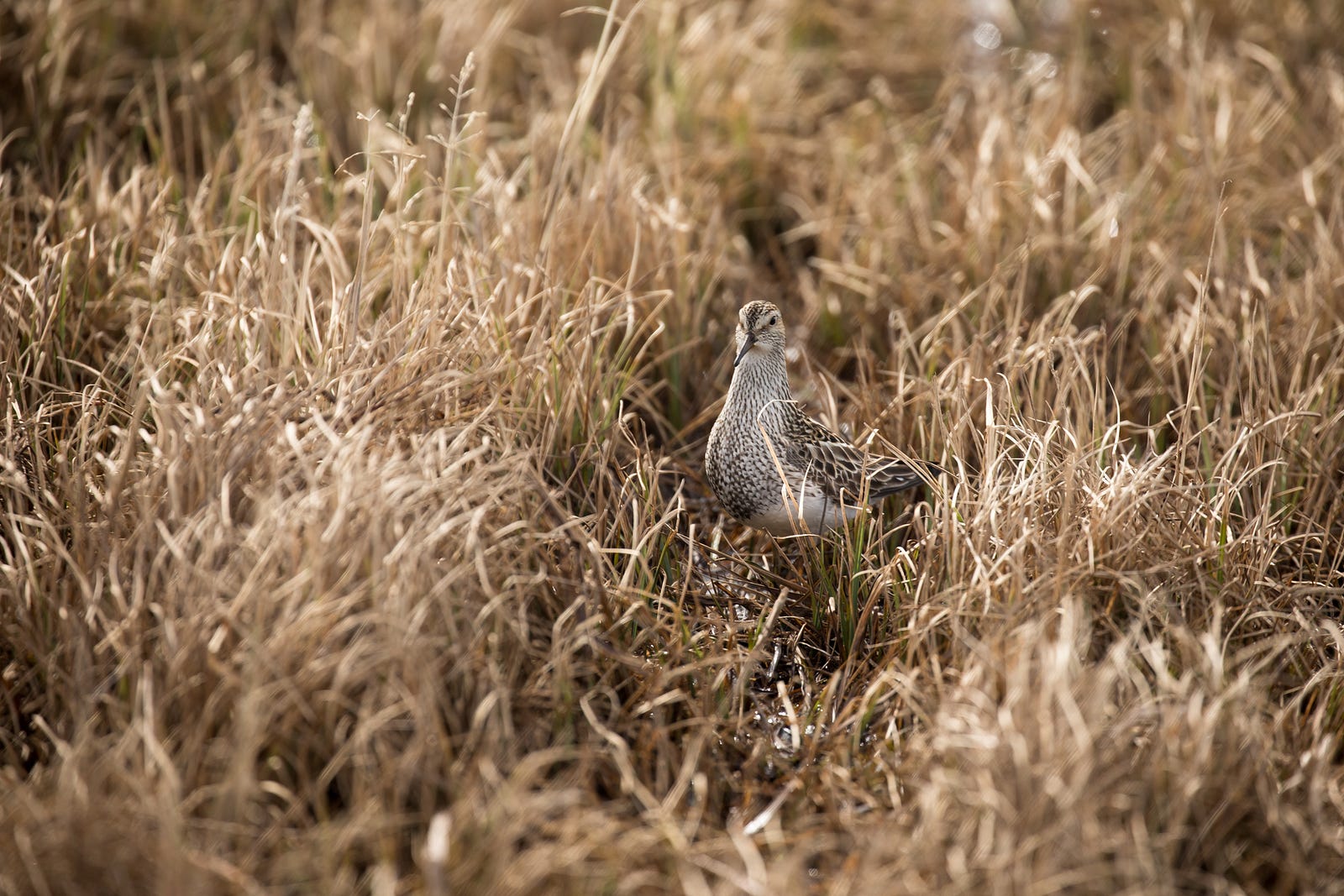U.S.Fish&Wildlife Alaska
Each June, a crew of graduate students, interns, and wildlife biologists arrive via bush plane to a frozen landscape at the far northwest corner of Arctic National Wildlife Refuge. They create a temporary home of expedition tents, a tent laboratory, and a cook/communal tent, all enclosed in electric fencing. Their brief summer field season is packed. Searching for well-hidden nests, they study the health and movements of waterfowl and shorebirds that migrate each summer to breed and rear chicks. An avian research station since 1979, the Canning River Bird Camp is a remote and challenging environment— and a science hotspot for the extreme bird nerd.
“We have shorebirds that are displaying that we never get to see anywhere else, there’s bears, there’s caribou, it’s just an amazing landscape, and something you get to be in. I think for me that’s the biggest part of it, it’s not something you get to see, it’s something you get to be part of. -Shiloh Schulte, Manomet Research Biologist


“It’s an extremely important area for birds that utilize all of the western hemisphere flyways. In a way, all roads lead to the Arctic coastal plain,” said Chris Latty, bird biologist with the Refuge. “And the Canning River Delta has the highest density of wetlands and habitat for these nesting birds within Arctic Refuge.” [
“The birds that we see breeding here come from all across the world. We have birds coming up from South America, and many folks in the lower 48 states have birds that winter in their vicinity that come up to Arctic Refuge to breed.”


What does it take to be a biologist in this unique time and place? A sense of adventure, resilience to harsh and unpredictable weather, creativity for remote living away from creature comforts, and of course… a love of birds.
Elyssa Watford, graduate student at the University of Alaska Fairbanks, is
literally living her dream. She splits her field season between the Canning and her graduate work with common eiders on the Barrier Islands just to the northeast.

“My dream was always to work with birds in Arctic National Wildlife Refuge. Every chance that I get to spend at the Canning River is just so special, and I like living in the place that I work, versus commuting back and forth every day from a town. You really get to immerse yourself in field life and understand the birds a lot better, just being out here and hearing them all the time and constantly seeing what they’re doing. So it’s a really unique opportunity and I cherish every moment I get.”
